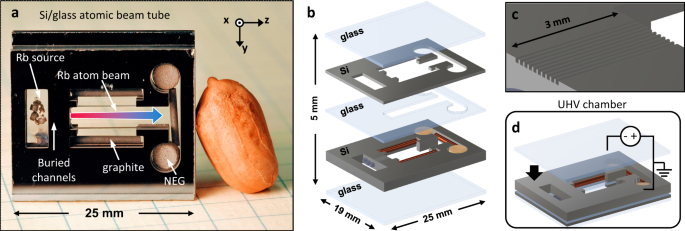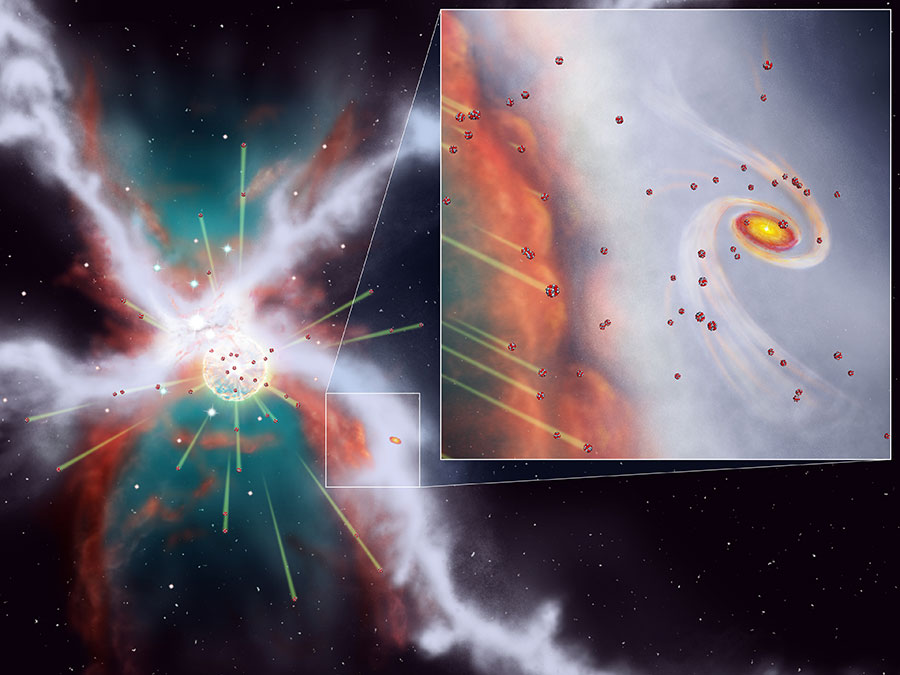2023-06-21 米国国立標準技術研究所(NIST)
◆NISTは1950年代から原子ビームを時刻合わせに使用しており、ビーム時計は正確で安定していますが、携帯性には課題があります。この新しいチップスケール原子時計は、マイクロファブリケーション技術を活用して作られ、非常に小型化されました。これにより、電力消費が少なく、GPSが届かない状況でも使用できます。今後はさらなる安定性の向上を目指して研究が進められる予定です。
<関連情報>
- https://www.nist.gov/news-events/news/2023/06/new-tiny-atomic-beam-clock-could-bring-stable-timing-places-gps-cant-reach
- https://www.nature.com/articles/s41467-023-39166-1#citeas
チップスケールの原子ビーム時計 A chip-scale atomic beam clock
Gabriela D. Martinez,Chao Li,Alexander Staron,John Kitching,Chandra Raman & William R. McGehee
Nature Communications Published:13 June 2023
DOI:https://doi.org/10.1038/s41467-023-39166-1

Abstract
Atomic beams are a longstanding technology for atom-based sensors and clocks with widespread use in commercial frequency standards. Here, we report the demonstration of a chip-scale microwave atomic beam clock using coherent population trapping (CPT) interrogation in a passively pumped atomic beam device. The beam device consists of a hermetically sealed vacuum cell fabricated from an anodically bonded stack of glass and Si wafers in which lithographically defined capillaries produce Rb atomic beams and passive pumps maintain the vacuum environment. A prototype chip-scale clock is realized using Ramsey CPT spectroscopy of the atomic beam over a 10 mm distance and demonstrates a fractional frequency stability of ≈1.2 × 10−9/√τ for integration times, τ, from 1 s to 250 s, limited by detection noise. Optimized atomic beam clocks based on this approach may exceed the long-term stability of existing chip-scale clocks, and leading long-term systematics are predicted to limit the ultimate fractional frequency stability below 10−12.



